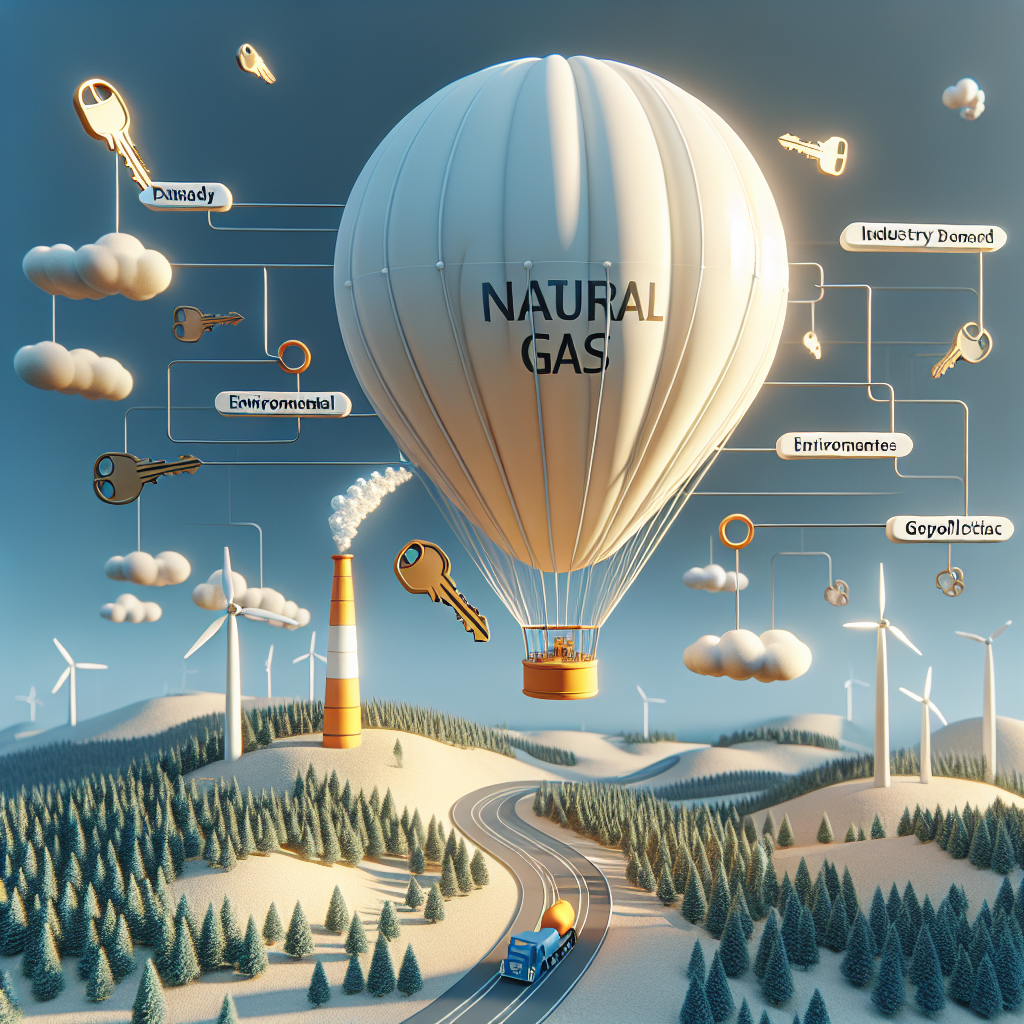Natural Gas Prices Surge: Analyzing Factors Behind the 18% Rally
The Current Surge in Natural Gas Prices
Natural gas futures have experienced a remarkable resurgence, rallying by 18% this week and reaching a one-year high. Amid forecasts predicting colder temperatures across the U.S. and concerns over potential disruptions to European liquefied natural gas (LNG) supplies, the market has reacted strongly. This surge signifies a notable shift in sentiment and demand dynamics within the energy sector.
Weather Patterns and Heating Demand
As reported by Beth Sewell, the president and CEO of Quantum Gas & Power Services, the unseasonably warm fall has now given way to winter temperatures across a majority of the country. This change is crucial for market traders who are capitalizing on the volatility that colder weather brings. Heating demand is expected to escalate, particularly as forecasts suggest significantly colder conditions extending into early December.
On Thursday, natural gas for December delivery settled at $3.34 per million British thermal units on the New York Mercantile Exchange, reflecting an increase of 15 cents, or 3.3%, just one day prior. This price point marks the highest since November 15, 2023, indicating a bullish sentiment as traders brace for higher heating needs. Demonstrating this increased demand, prices have risen 18.2% week-to-date.
Implications for U.S. Consumers
While higher natural gas prices may be good news for traders, U.S. consumers will likely bear the brunt of rising costs. David Allen, managing director at Octane Investments, highlights that increased input prices typically translate into higher electricity costs as utility companies pass on expenses to their customers. However, there is a potential silver lining to consider in light of the political landscape surrounding energy policies in the U.S.
Allen mentions that the anticipated impact of the Inflation Reduction Act on electricity generation might be reduced due to the current energy prices. This act, which promotes accelerated fossil fuel plant closures, may be moderated, offering some respite to consumers facing escalating electricity costs.
Supply Dynamics and Inventory Levels
The recent rally in natural gas prices has also been fueled by supply data, particularly the Energy Information Administration’s report of the first draw of the winter season. For the week ending November 15, U.S. natural-gas supplies saw a decline of 3 billion cubic feet (bcf), contrasting sharply with analyst forecasts that predicted an increase of 5 bcf. This unexpected downturn in supply contributed to the price uptick.
Seth Harper, a commodity analyst at Schneider Electric, notes that while the recent decline is notable, it remains less than the five-year average, which has been around 16 bcf for this period. Despite having a storage surplus relative to historical levels increasing by 6.4%, Harper suggests that the rally in prices is showing no signs of abating, implying continued market dynamism.
European Market Influences and Geopolitical Risks
European markets have also played a significant role in influencing natural gas prices, particularly amid ongoing tensions surrounding the Russia-Ukraine conflict. Andrew Meleney from Infrastructure Capital Advisors notes that European natural gas prices have surged, with inventories currently below normal levels. This situation is exacerbated by fears of disruption to energy supplies as geopolitical tensions escalate.
The most active Dutch TTF natural gas contract for December ended at 48.70 euros, an increase of 4.1% for the session, indicating that European prices are closely linked to weather patterns and political developments. The colder temperatures expected this winter create an added urgency for natural gas, which could further escalate prices in both U.S. and European markets.
The Future of U.S. LNG Exports
Another important aspect influencing natural gas prices is the state of U.S. LNG exports. The U.S. market is seeing stable export levels, bolstered by new LNG projects such as the Plaquemines LNG plant in Louisiana and the Corpus Christi LNG Stage 3 in Texas, both starting to accept feed gas. With increased demand for U.S. LNG in Europe, traders are closely watching how these supply chains evolve.
However, as Matthew Polyak from Hummingbird Capital notes, the growth of global data center demand could keep the appetite for natural gas robust, even as industries recover. The international nature of the LNG market means price pressures could evolve as shipments are redirected based on market dynamics.
Conclusion
In summary, the recent surge in natural gas prices is multifaceted, driven by seasonal heating demands, shifting supply dynamics, geopolitical factors affecting Europe, and the ongoing evolution of the U.S. LNG export landscape. For serious investors focused on commodities and resource-driven stocks, understanding these intricacies is crucial for navigating the current energy market. As we move deeper into the winter season, continued vigilance will be essential to assess how these dynamics unfold and impact pricing trajectories.















